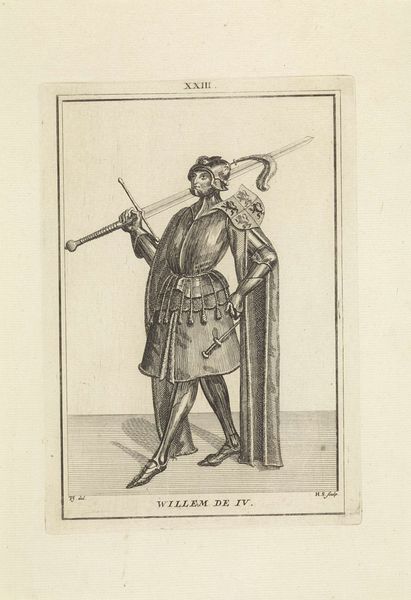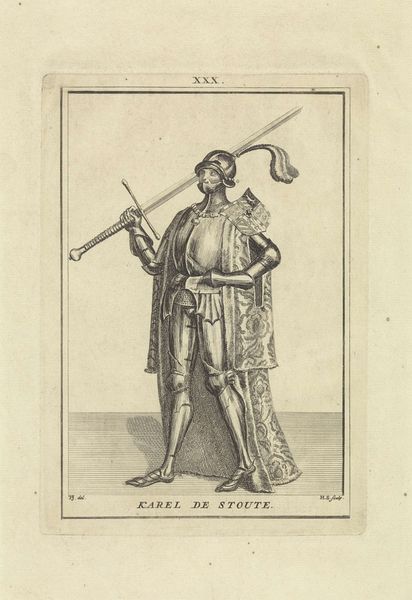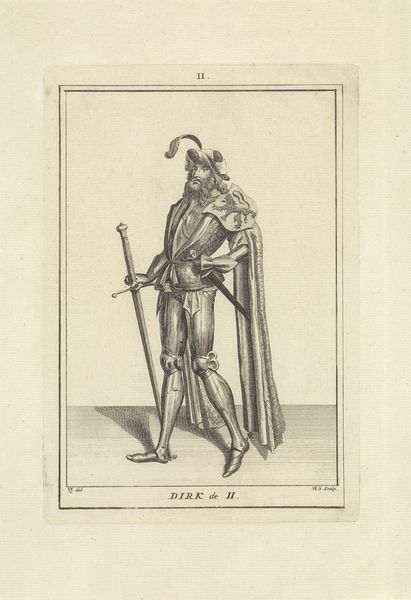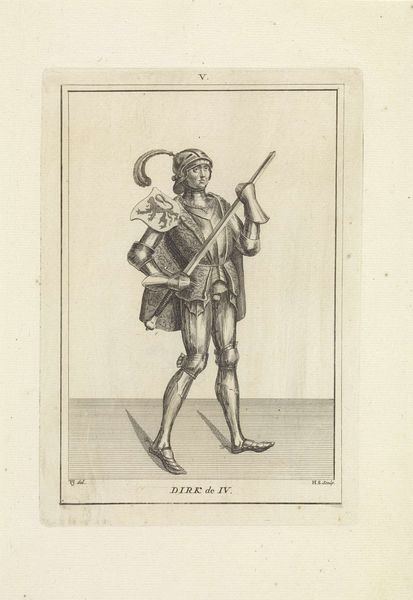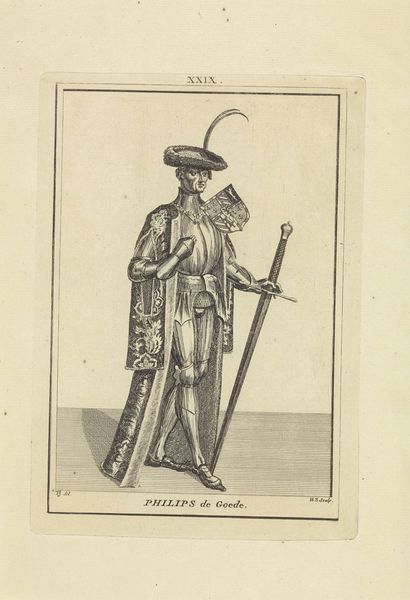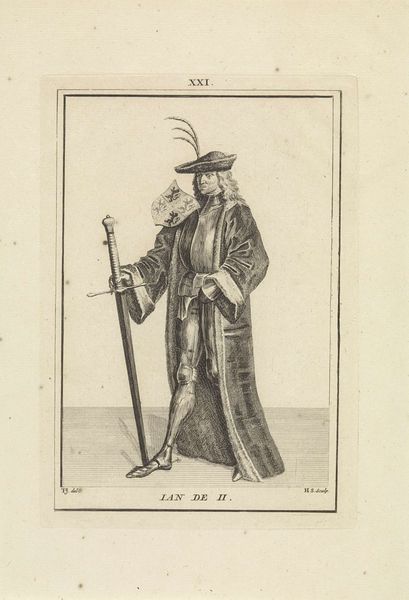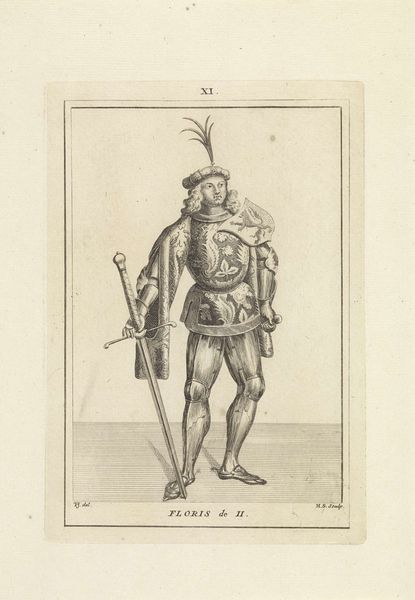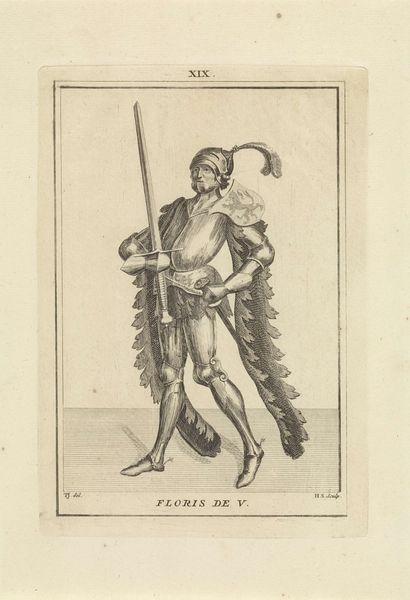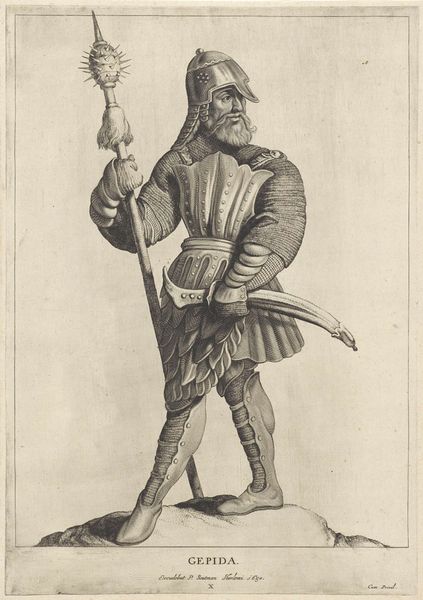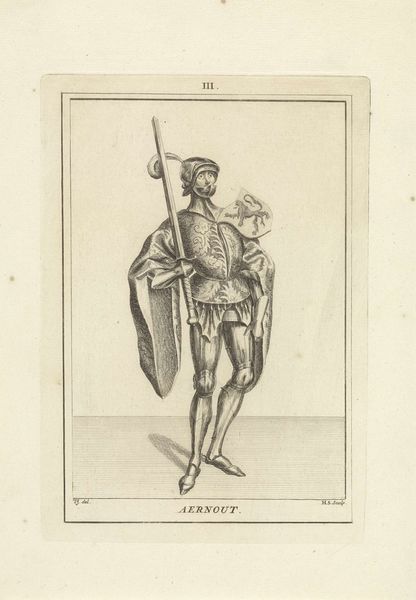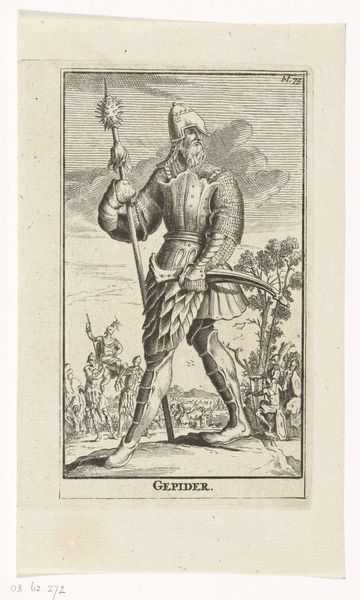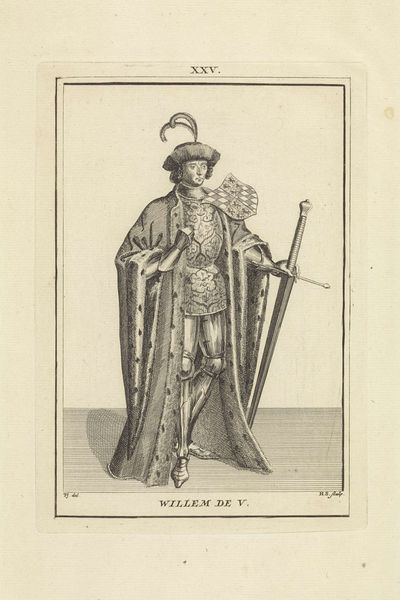
print, metal, engraving
#
portrait
#
medieval
# print
#
metal
#
figuration
#
line
#
history-painting
#
engraving
Dimensions: height 192 mm, width 135 mm
Copyright: Rijks Museum: Open Domain
Hendrik Spilman made this engraving of Willem I, Count of Holland, sometime in the 1700s. The image is created through the incising of lines into a metal plate, which then holds ink to be transferred to paper, a process that demands precision. The fine lines and shading used to render Willem's figure and clothing reflect a skilled hand and careful planning. Engraving, as a method, mirrors the social hierarchy it portrays. Willem’s attire, his sword and emblems of power, speak to a lineage of authority. Yet, the print itself, made reproducible through the printing process, hints at the shifting social landscape of the 18th century, where images and ideas could circulate more widely. The labor-intensive method contrasts with the potential for mass distribution, a tension that encapsulates the era’s complex relationship with power, production, and representation. Ultimately, by understanding the materials and processes behind this print, we gain a deeper insight into its cultural significance and the subtle ways it reflects broader social and political currents.
Comments
No comments
Be the first to comment and join the conversation on the ultimate creative platform.
